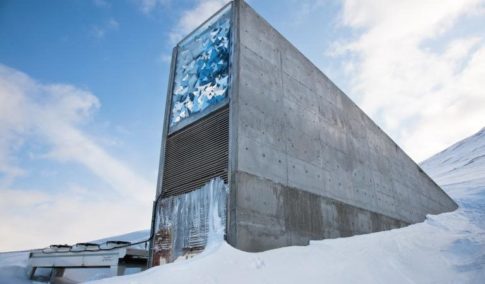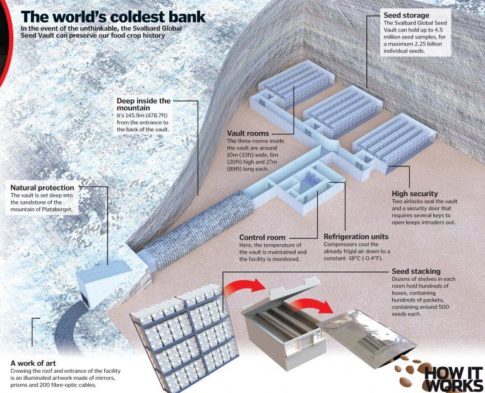Flashback:
– Syria Crops Sheltered In Arctic Doomsday Seed Vault … To Protect Them From Wars And Natural Disasters
– Investors Behind Doomsday Seed Vault May Provide Clues to Its Purpose (Part 2):
The group of investors includes The Bill and Melinda Gates Foundation, The Rockefeller Foundation, Monsanto Corporation, Syngenta Foundation, and the Government of Norway.
***
“Between 2015 and 2019, the Svalbard vault played a critical role in rebuilding seed collections in Syria when the region was torn apart from war.”
– Global Doomsday Seed Vault To Get New Batch Of Seeds:
Authored by Naveen Anthrapully via The Epoch Times,
The Svalbard Global Seed Vault in Norway, which acts as a backup facility for the world’s largest variety of crops against potential seed extinction due to a global calamity, is set to receive close to 20,000 seed samples.
Officially opened in 2008, the seed vault is set about 394 feet into a mountainside on Spitsbergen Island. With 20 gene bank depositors donating 19,585 seed samples in the latest batch, the total number of seed samples at the vault now exceeds 1.2 million, according to Crop Trust, a nonprofit established by the Food and Agriculture Organization of the United Nations in 2004.
This makes the Svalbard vault home to the largest crop diversity collection in the world located in a single place. The latest batch will include seeds from countries depositing for the first time such as Albania, North Macedonia, Benin, and Croatia, Crop Trust reported.
Read moreGlobal Doomsday Seed Vault To Get New Batch Of Seeds



